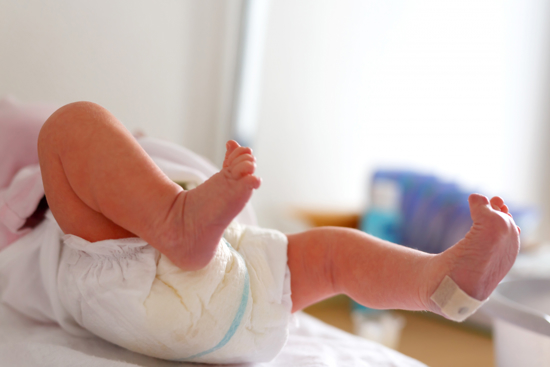How you experience pain is very individual and can depend on how well labour has progressed, expectations, past experiences including previous deliveries.
It is important that you assert your own wishes and needs for how you give birth so that the healthcare professionals can take this into account as far as it is safe for your health and that of your baby. Your wishes and need for pain relief will also be assessed continuously while you are in labour.
Pain-relief during birth without medication
Care-giving, motivation for giving birth, confidence and the attendance of another adult can help you to cope with the normal pain of giving birth by means of simple pain-relieving remedies.
These remedies are effective, safe to use and are good options if you prefer to avoid medicinal analgesics:
- hot cloths
- hot bath or hot shower
- massage
- heated rice bags
- effective and comfortable positions with variations
- rest or activity
- having a birth helper present
- local injections of small amounts of sterile water under the skin (steriltvannspapler)
- acupuncture and relaxation techniques, provided by midwives with special training
During the first phase of labour, where the cervix changes, and before labour transitions to the active phase, these are good remedies for relieving the pain. You will benefit from caring human support and encouragement so you don’t lose heart in this phase.
The active phase of labour starts when the cervix has softened and dilated (opened) and the contractions are regular. This is when you may feel a need for, or the healthcare professionals may recommend, additional pain relief.
Epidural and spinal anaesthesia
Regional anaesthesia: spinal, epidural or combined spinal/epidural anaesthesia are used in about one in three deliveries in Norway, and are available in the majority of birth settings. A doctor, called an anaesthetist, places the anaesthetic.
Epidural anaesthesia is rarely associated with serious complications, but it can cause weaker contractions and delay progress. Some women have a headache after delivery or impaired nerve function in their legs after an epidural. However, permanent effects are very rare.
First, you will be given a local anaesthetic to numb the epidural site, and a catheter will then be needle-guided into the epidural space in the spine where it stays in place until you have given birth. Through the catheter, continuous pain-relieving medication is delivered to numb the nerve endings.
Your nerves involved in movement will hardly be affected by the medication, so you should be able to remain upright and active during labour. An epidural is especially beneficial during the dilation stage.
Healthcare professionals usually recommend epidural for:
- breach births (baby positioned rump first)
- multiple births (if you are pregnant with twins)
- hypertension (if you have high blood pressure)
- pre-eclampsia (you have been diagnosed with hypertension and proteinuria)
Once labour has progressed so far that your baby will soon be delivered, you can also be given spinal anaesthesia. This works faster than an epidural and lasts for about two hours. The anaesthetist places the spinal anaesthesia by giving you an injection in your back.
Nitrous oxide and other anaesthetics
Pudendal nerve block
The midwife or obstetrician injects local anaesthetic to numb the nerves in the lower part of the vagina. The injection is given on each side, internally in the vagina and is fast acting.
Local anaesthetic
The midwife places a local anaesthetic at the vaginal opening at the last stage of the expulsion (pushing out) stage.
Nitrous oxide N2O
Nitrous oxide, also known as ‘laughing gas’, is offered at some centres and helps many women through much of the dilation stage. The nitrous oxide is breathed in through a mask and used during each contraction.

Newborn screening and examination
All parents are offered medical examinations of their newborn baby to detect any anomalies or congenital disorders.
Illustration: Irina Schmidt / Mostphotos